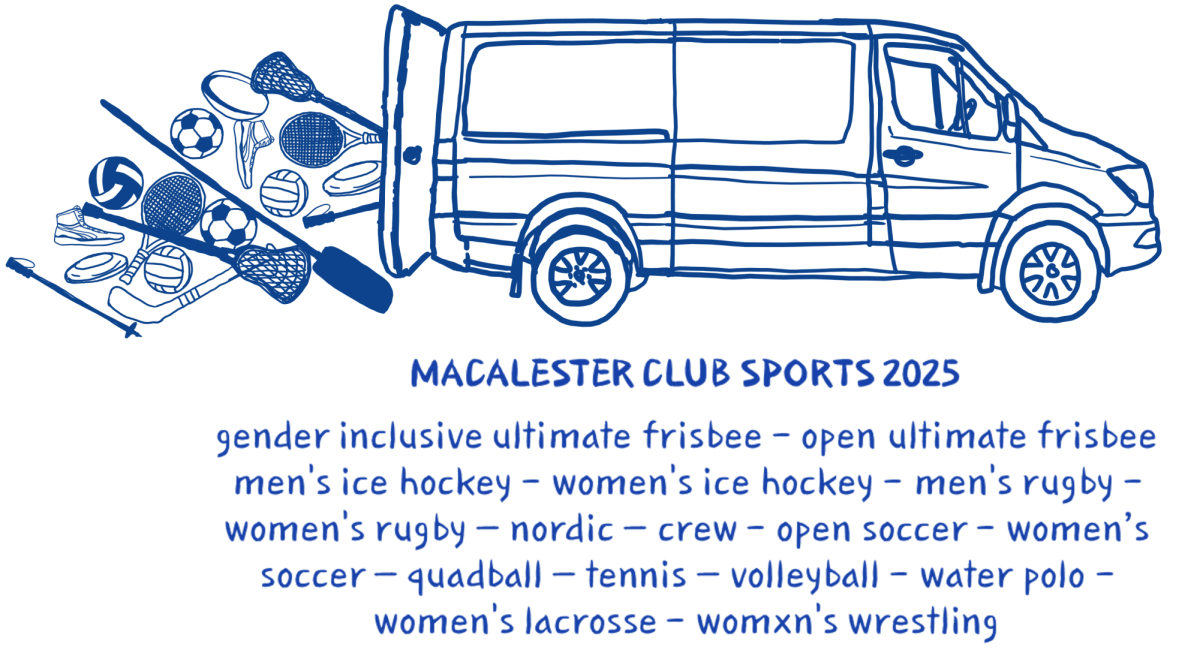In the October 18th issue of The Mac Weekly, an article titled “Minnesota Lynx win again, while WNBA loses,” written by Zach Gilfix, was published in the Sports Section. It attempted to explain some of the difficulties facing the WNBA and other women’s professional sports organizations, and offered some possible solutions.
This article inspired some strong reactions across the campus, and as female athletes we felt compelled to respond. Not only for our own sakes, but for our mothers’ generation that fought for Title IX and founded organized athletic competitions for women—incredibly, just over 40 years ago. A few of the solutions offered in the article were particularly sexist. Saying that women’s sports are a “lesser quality” version of an identical product is not only offensive, but false. Gilfix has since acknowledged that this is not his individual opinion, but rather his perceived opinion of most sports fans. However, this is yet another generalization that, if not backed by a citation, has no place in a news article. Furthermore, the “genetic differences” that Gilfix referenced in his defense in fact prove that women’s and men’s sports are not identical products. Women’s sports do not attempt to be a version of men’s sports. They are the best version of women’s sports, the highest quality version of the product they’ve created.
The idea of changing rules in order to make women’s sports “more unique” is problematic and offensive. Suggesting that gimmicky rule changes are necessary to interest fans demeans not only the integrity of the sport, but the skill and effort of all women athletes. Gilfix claims: “the reality is that many men’s fans will be hard to win over.” This is another strong statement based on opinion rather than fact. It falsely suggests that the only possible fanbase for women’s sports resides within the existing fanbase of men’s sports and that these fans are men with a similarly obtuse understanding of women’s athletics.
We appreciate that the intent of his article was to find ways to boost attendance at professional women’s sporting events. We’re also concerned about this issue. However, the article missed some key driving factors of lower attendance for women’s athletics. Those factors can be easily boiled down to one major cause: institutionalized sexism. Women’s sports are either not broadcast at all, or tend to be broadcast on channels or at times of day with much smaller viewership. In his article, Gilfix misrepresented the statistics involving audience support for these events. When TV channels do choose to air women’s sporting events, there is an audience. To use the example that Gilfix himself cited, the WNBA has experienced a steady increase in popularity. In the most recent regular season, ESPN2 averaged 231,000 viewers, up 28% from the last season (180,000). The WNBA saw increases in attendance this season (+1.0%), led by the Chicago Sky (+17%), the Phoenix Mercury (+9%), and the Indiana Fever (+8%). These increases suggest that women’s athletics are growing in popularity and fan base, and what they currently need most is an increase in money, sponsorship and accessibility via televised broadcasts.
Money can be spent to maximize profit, minimize expense and earn more money, or it can be invested conscientiously as an extension of personal ethics. Athletic sponsors seem to operate primarily by the first paradigm: put money in purely to get money out. If this continues, professional women’s sports will continue to suffer. The financial culture surrounding athletics must be changed to reflect an investment in a new set of values. We value athleticism, gender equity, beauty of motion, competition, positive role models, discipline and talent. As a result, we would like to see sponsors—the companies we buy from, the gear we wear—acting in a socially-responsible nature that promotes female athletic competition. While Nike might make more by choosing Randy Moss to star in an ad campaign, they could instead be counteracting centuries of discrimination, ignorance and exclusion by intentionally supporting female athletes as they strive to perfect strength, speed and stamina.
Organized women’s sports have been around for less than half a century. Incredible progress has been made, but there is still more work to be done. Rather than ignorantly comparing female athletes to male, we should begin a dialogue that fosters a space for understanding women’s sports and encourages their organization to succeed on its own terms. Individually and culturally, we must behave in a way that leads us toward a future that we desire: a future of equality and support for all men and women involved in athletic competition.







Mary Ince • Sep 5, 2019 at 8:26 pm
An intriguing discussion is definitely worth comment. There’s no doubt that that you need to publish more about this subject matter, it may not be a taboo matter but typically people do not talk about such issues. To the next! Many thanks!!